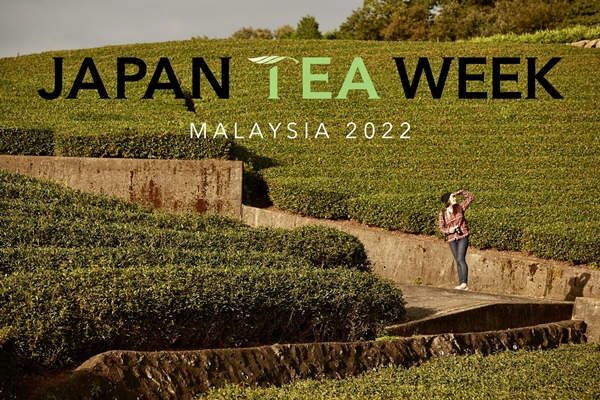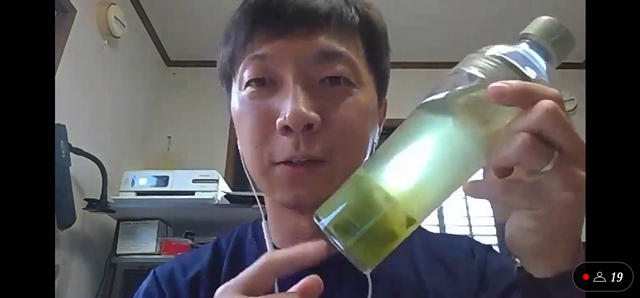I was feeling kinda down because I couldn’t make it to this year’s World Ocha Festival, which is currently happening in Shizuoka. I thought I could make it there, but as August crept by, I knew I couldn’t get any affordable flights to Japan even if it reopens fully before the festival (for a recap of the previous edition of the festival, click to HERE).
However, I guess it could be a blessing in disguise that I couldn’t book anything because my country is suddenly going to the polls next month (November 19 to be exact) and my company had already frozen all our annual leave days. So even if I had managed to book anything to Japan, all my tickets and arrangements would have gone up in smoke. So yeah, safer to plan for next year!
So in the meantime I envied folks who were at the World Ocha Festival on the first day, which was Thursday, and enjoyed the photos that tea industry friends were sharing on social media.
Excitingly, an opportunity to follow part of the festival was offered to me just yesterday! Kuala Lumpur-based Ami-san, the founder of Secai Marche, alerted me on Facebook that there would be a live event organised by Japan Tea Export Promotion Council happening today.
Secai Marche previously organised or coordinated a couple of Japanese tea events for Malaysians, and I have also managed to join their 2020 webinar.

Today’s live broadcast and online talk were part of the Japan Tea Week Malaysia 2022 event happening in Kuala Lumpur, which was supported by Secai Marche.
So for the first time ever, they connected Malaysians directly with the World Ocha Festival, live from Shizuoka. Hosted by Nihoncha Instructors Hayashi Natsuko and Bret Mayer, there were snippets of the World Ocha Festival shown in Facebook and Instagram.

In addition, there was an online talk segment, also hosted by Hayashi-san and Mayer-san, which was a special sharing session with three tea producers from Saitama, Shizuoka and Kagoshima respectively.

The first farmer to speak was Ikeya-san from Ikenoyaen of Iruma, Saitama. Those who have followed the Japanese Tea Marathon last year would remember him. He explained about the production region and the characteristics of Sayama tea.
His hope is to produce tea that anybody anywhere, no matter how they make it, can enjoy a nice refreshing cup that is not too bitter. He said he works hard to ensure the colour, aroma and taste are all nicely balanced in every cup of tea.
He also shared how to brew tea including using the cold-brew bottle method.

Next up was Tamura-san from Matcha Organic Japan in central Shizuoka. He talked about how he had grown up in a tea-producing family and how he initially wasn’t too interested in tea when he was young, but then he was moved by how tea could bring people together and make them smile.
Tamura-san introduced his sencha-making factory as well as showed a glimpse of the beautiful tea fields outside the factory. After that he showed a video of his Matcha More Cafe, which I have written about before here, thanks to the collaboration with Local Network Service Shizuoka.
He said that there are actually several cafes here in Malaysia that use his matcha in their menus. Not too surprised because his company is quite active in promoting their stuff overseas, from what I could see. Not sure if any of the cafes are in my city though. Ha.

The third speaker was Matsushita-san from Matsushita Seicha in Tanegashima, an island off the coast of Kagoshima. Have also tasted their tea before.
He is the fifth generation to work in the farm, saying that they practice sustainability in tea production. This started when the family found that he was allergic to some chemicals, so in 2003 his father decided to switch to reducing and eventually eliminating chemical-based fertilisers. The farm went 100 per cent pesticide-free in 2012, and was certified organic by Japanese Agricultural Standards (JAS) in 2017.
He spoke about Tanegashima black tea, something which I haven’t tried, and even gave a tip on how he enjoys it iced, with millet sugar made in Tanegashima. Oh learnt something new, didn’t know Tanegashima produces millet.
The entire segment last around one hour, and although brief, was a great sharing session to me. Would have been better if there was a Q&A or feedback session but I guess they are pressed for time. Nothing beats being in Japan and meeting tea industry folks physically, of course, so can’t wait to go back!!
Talking about the World Ocha Festival, there are a couple of contents that I should be writing about soon after the event. In fact, the information is already available. Well, let’s see if I have the time. Heh.